Rosé wine, renowned as one of France’s most cherished beverages, is a delightful and versatile option within the extensive wine category. What makes rosé particularly fascinating is that it can be crafted from virtually any grape variety typically used for red wine production. This flexibility in grape selection allows winemakers to express various flavors, aromas, and characteristics, giving each rosé its unique personality.
One of the key factors contributing to the success of rosé wine is its preference for warm, tropical climates. These environments foster the ripening of grapes, which is essential for achieving the desired balance of sweetness, acidity, and flavor depth that rosé enthusiasts often seek. The bright, refreshing quality of rosé makes it an ideal accompaniment to a wide range of dishes, enhancing everything from light salads and seafood to richer fare like grilled meats and pasta.
The roots of rosé wine date back to ancient civilizations, particularly the Phoenicians and Greeks, who were instrumental in its early production from around 1500 to 600 BC. The Greeks had a unique approach to drinking wine; they often diluted their red wine with water, believing this practice served a significant purpose.
They thought that mixing wine with water helped ward off harmful microorganisms, which could pose health risks in ancient times. Additionally, the Greeks held a lingering fear that consuming undiluted wine might lead to madness or irrational behavior, making their diluted concoction a safer option.
As the centuries progressed, the influence of the Romans became pivotal in the expansion and popularity of rosé wine. By leveraging their extensive trade networks, the Romans were able to promote this delightful drink throughout the Mediterranean region. Their efforts not only increased the availability of rosé but also elevated it to the status of one of the most popular beverages of the time, appreciated by the elite and common folk alike.
Today, rosé wine continues to thrive and evolve, maintaining its status as a favorite among wine lovers across the globe. The range of styles and flavors available ensures that there is a rosé for every palate, making it a staple at summer picnics, casual gatherings, and formal celebrations alike.
If you want to delve deeper into the world of rosé wine and discover more about this enchanting beverage, don’t forget to check out exclusive content like this and other engaging GA Originals on YouTube.
Every time I open a bottle of wine, it is an amazing trip somewhere.
-José ANDRES
Jump To Section
4 Production Methods
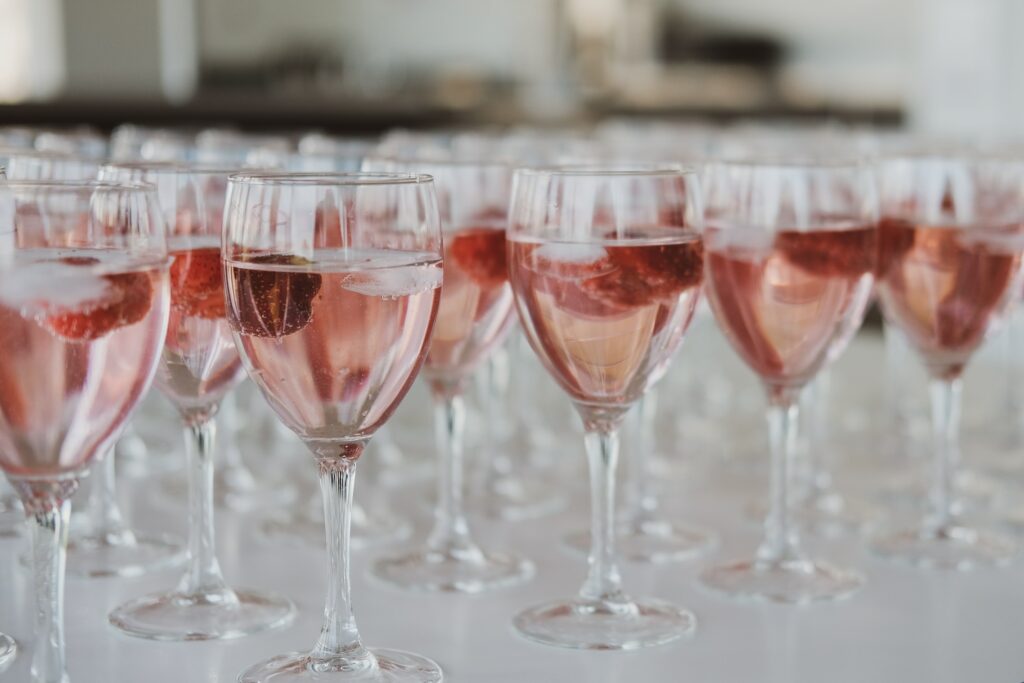
Rosé wine, known for its delightful flavors and refreshing qualities, can be produced using four distinct methods, each contributing unique characteristics to the final product. These methods are Short Maceration, Direct Pressing, Bleeding, and Blending, and understanding each one allows wine enthusiasts to appreciate the nuances of this popular style of wine.
By utilizing these four methods, winemakers can craft a wide variety of rosé wines that cater to different palates and preferences, enhancing the enjoyment of this versatile and beloved wine style. Each approach has its charm and appeal, contributing to the rich tapestry of flavors and experiences found in rosé wines around the world. We will examine each one of them in detail below.
Short Maceration
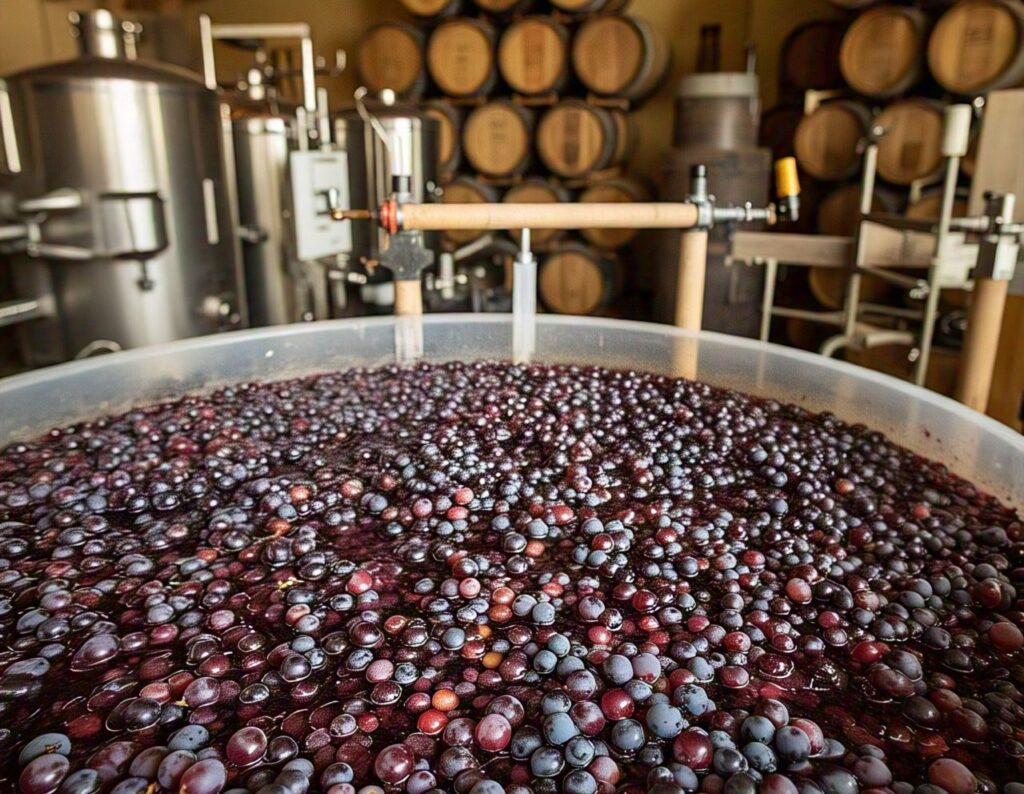
Short maceration is widely recognized as the most prevalent method for producing rosé wine, and it plays a crucial role in determining the wine’s final characteristics. This technique can take place either before or during the alcoholic fermentation process, making it versatile in its application.
The overall process mirrors that of red wine production, where the essential elements of grape juice and skins combine to extract flavors, aromas, and colors. However, what distinguishes the short maceration technique is the relatively brief period during which the grape skins remain in contact with the must—the freshly crushed juice of the grapes. Typically, this contact lasts anywhere from approximately 6 to 48 hours, a timeframe meticulously chosen by the winemaker to achieve the desired shade of pink.
Careful timing is paramount; too little contact time may result in a pale, almost colorless wine, while prolonged exposure can lead to a deeper hue that strays into the territory of red wines. Additionally, the maceration period directly influences the wine’s flavor profile. In general, the longer the grape skins are allowed to remain in contact with the must, the darker the resulting rosé will be, which often translates into bolder and richer flavors.
Winemakers are acutely aware of these dynamics and expertly balance the duration of maceration against their vision for the finished product. This intricate dance between color, flavor, and the preferences of potential consumers ultimately defines the style of rosé being crafted. By employing short maceration techniques, vintners can create a diverse range of rosé wines that appeal to a variety of palates, all while celebrating the unique characteristics of the grape varietals used.
Direct Pressing
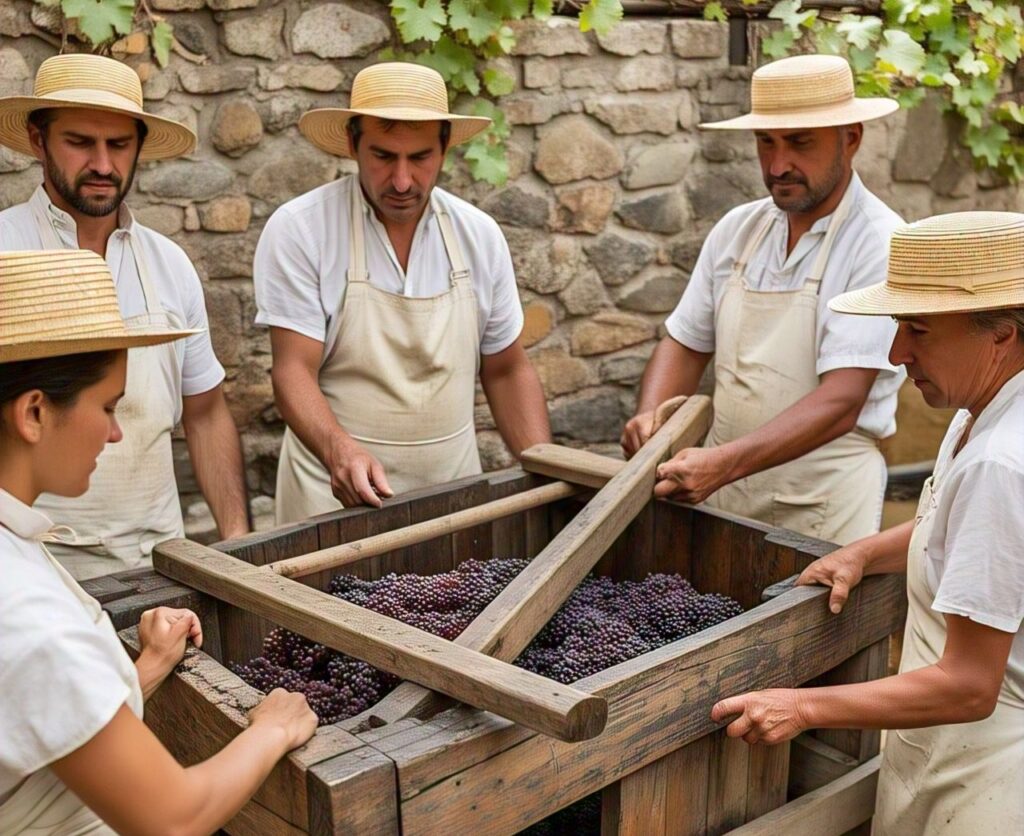
Direct pressing is a winemaking technique that involves the immediate pressing of red grapes right after they are harvested. This method is designed to minimize the amount of time the grape must be in contact with the skins, which is crucial for producing wines with specific characteristics.
By pressing the grapes without allowing prolonged skin contact, the resultant juice maintains a lighter hue, often resulting in a delicate shade of pink. This brief interaction with the skins is especially important when creating styles such as vin gris or blanc de noirs, which are terms used to describe wines made from red grape varieties that yield a pale, rosé-style wine.
In the context of sparkling rosé wines, this technique produces a refreshing and aromatic beverage, emphasizing the inherent fruit flavors of the grapes while minimizing the extraction of tannins and color that typically come from extended skin contact.
The careful control of this process allows winemakers to craft a wine that showcases the nuanced profiles of the specific grape varieties used, while also achieving a balance between acidity and sweetness. Ultimately, direct pressing is an artful approach that highlights the beauty of red grapes uniquely and vibrantly, resulting in a delightful rosé that appeals to a wide range of palates.
Bleed or Saignée
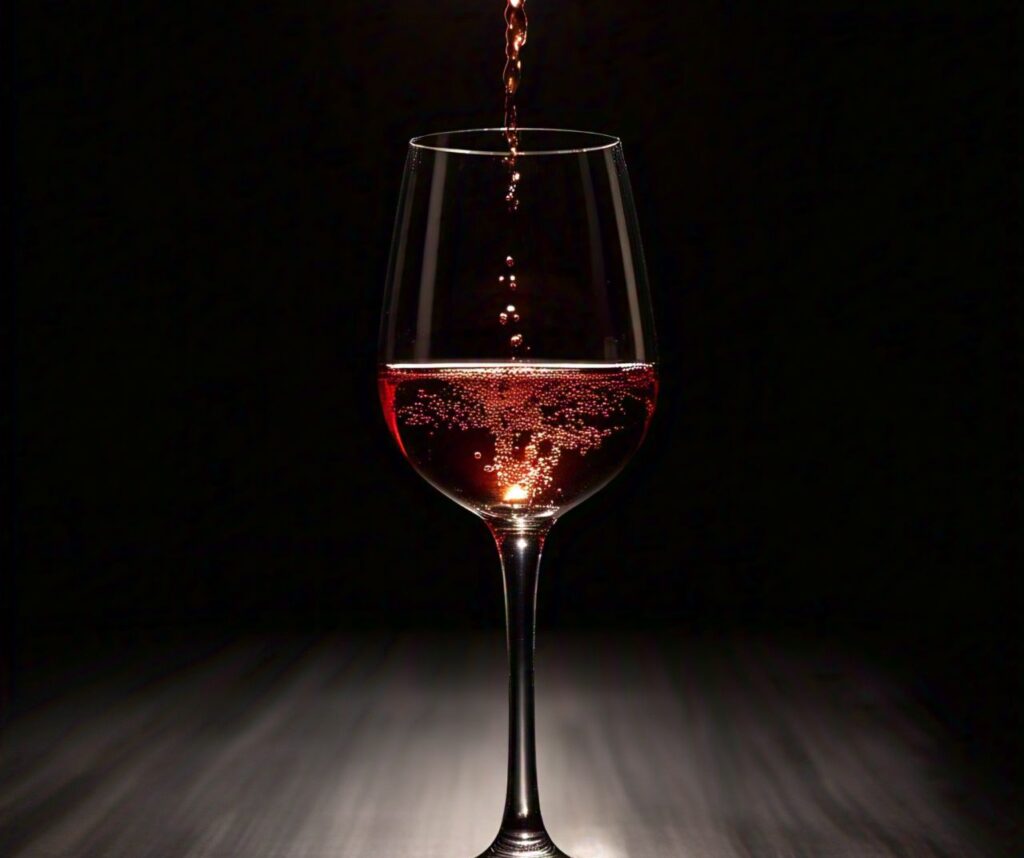
The term “Bleed,” or “Saignée” in French, refers to a specific winemaking technique employed during the initial stages of red wine fermentation. This method involves withdrawing approximately 10% of the liquid from the fermenting mixture, which at this point has already developed a pink hue. This portion is “bled” off to a separate tank, where it undergoes its fermentation process to produce rosé wine.
The Saignée method is particularly prevalent in renowned wine-producing regions known for their high-quality red wines, such as Napa Valley and Sonoma. This technique not only allows winemakers to craft delightful rosés, but it also results in a more concentrated and expressive end product. By removing a portion of the juice early in the fermentation, the remaining must gain increased skin-to-juice contact, which enhances the overall color, flavor, and structure of the red wine.
The rosé produced through the Bleed method is typically richer and more complex compared to other rosé-making techniques. It often exhibits a vivid palette of flavors, characterized by distinct notes of cherry, blackberry, and blueberry. Additionally, these wines may carry aromatic nuances of various herbs, such as eucalyptus and bay leaves, adding an intriguing depth to their profiles.
As a result of this careful and intentional approach, the Saignée method contributes to the creation of rosés that not only stand out for their vibrant color and robust flavor but also reflect the terroir of the regions where they are cultivated. Wine enthusiasts and connoisseurs alike often appreciate these rosés for their ability to deliver both freshness and sophistication, making them versatile options for a wide range of culinary pairings and occasions.
Blending Method
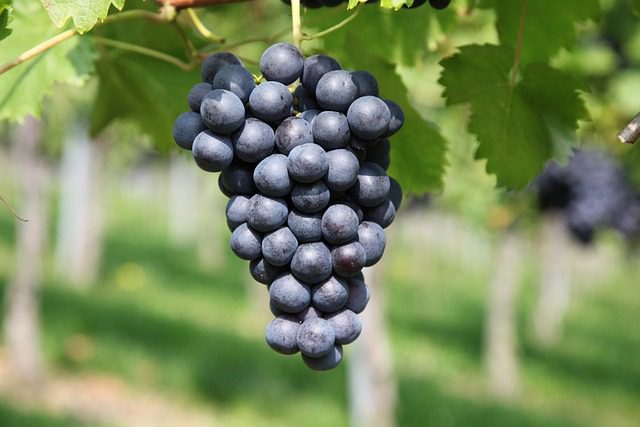
The Blending Method is a fascinating technique used in the creation of rosé wines, involving the careful combination of reds and whites that have already undergone the vinification process. To achieve this unique hue, producers typically incorporate around 5% or more of red wine into the blend. This small percentage is surprisingly sufficient to impart the desired pink tint to the white wine, transforming it into a delightful rosé. While this method may appear straightforward at first glance—akin to the ancient practice of diluting red wines with water to achieve a lighter color—there is much more complexity to it than meets the eye.
The art of blending requires not just a simple mix but a thoughtful and nuanced approach from the winemaker. Achieving a harmonious balance between the characteristics of the white and red wines is essential, as it ultimately determines the overall enjoyment and quality of the final product. Each component must complement the other, with careful consideration given to factors such as flavor profiles, acidity, and aroma, ensuring that the rosé captivates the palate.
Despite its simplicity, the Blending Method is relatively uncommon in the broader landscape of rosé wine production. However, it holds an esteemed place in the Champagne region of France, where it is a popular technique for crafting exquisite Champagne rosé. In this renowned region, French winemakers often start with a base of white wine, frequently using Chardonnay as their foundation, and then skillfully add a percentage of red wine, which is typically sourced from the Pinot Noir grape variety.
This meticulous process not only showcases the winemaker’s expertise but also results in sparkling rosé wines that are celebrated for their depth, elegance, and complexity. In essence, the blending method serves as a testament to the artistry and tradition of winemaking, transforming simple ingredients into sophisticated beverages that evoke the essence of the vineyard.
Bottom Line
Provence, France, is the heart of the world’s rosé production, known for its dry, delicate flavor and soft orange-pink hue. This picturesque region embodies the essence of summer with its refreshing wines. However, the appeal of rosé has expanded beyond France as wine regions globally, including Spain, Italy, the U.S., and Australia, craft their styles, like Spanish Rosado and Italian Rosato.
Each region contributes unique flavors and traditions, resulting in a diverse range of rosé wines. As winemakers worldwide explore this beloved style, rosé has evolved into an international phenomenon celebrating creativity and craftsmanship.
Did you like this article?
I hope this article has improved your wine skills. To learn more about wines, take a look at the Sauvignon Blanc: The Enthusiast’s Guide To Wine Lovers.
Leave a comment below and share our content. Help our community grow by following our social media on Spotify, Instagram, Facebook, YouTube, and TikTok. And stay up to date with the news from the world of Gastronomy.
Don’t forget to tag @gastrovinoacademy on Instagram and hashtag it #gastrovinoacademy.
Cheers 🍷


